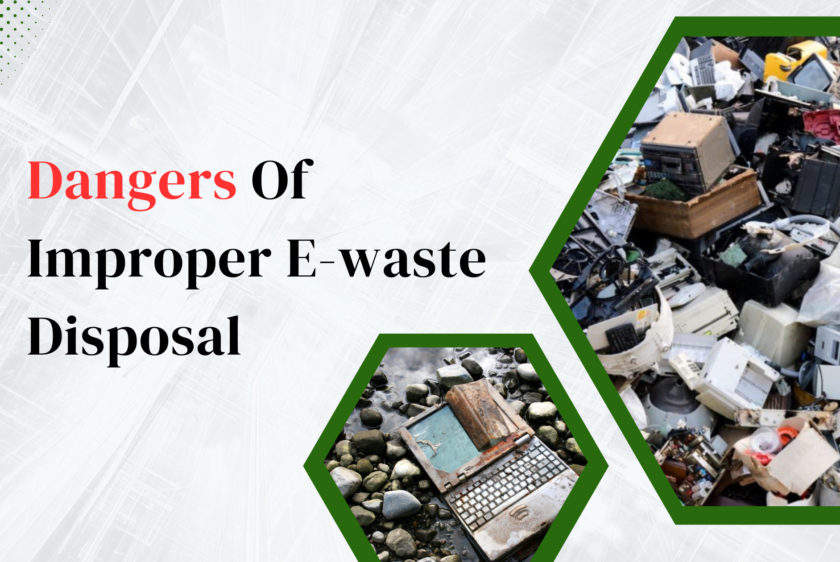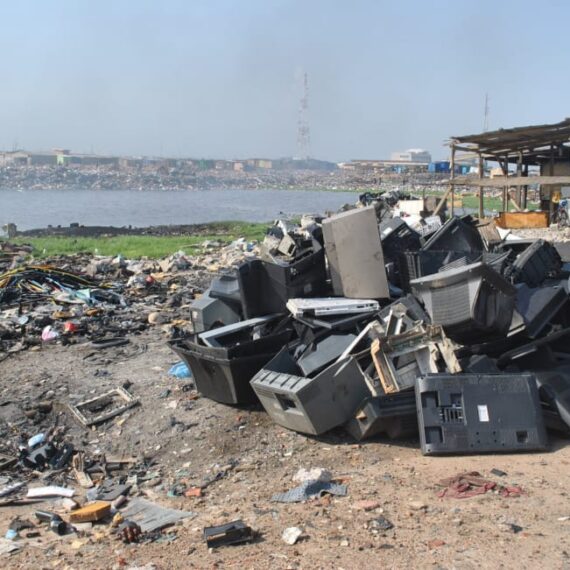
Effective Ways To Educate The Public About the Dangers Of Improper E-waste Disposal
The rapid advancement of technology has made electronic waste (e-waste) a major environmental issue. Improper disposal of electronic gadgets can harm the planet by releasing hazardous materials into the soil and water and using a lot of energy to extract valuable resources. The increasing demand for new electronic equipment has led to a significant increase in e-waste generation, making it crucial for individuals and businesses to prioritize proper disposal and recycling methods. This blog aims to explain the complexity of e-waste and suggest new ways to educate the public about its dangers, focusing on responsible electronic waste management.
Environmental Impact Of Electronic Waste
Electronic waste includes discarded electronic devices, such as smartphones, computers, and household appliances. The components of these devices often contain toxic substances like lead, mercury, and cadmium, which can contaminate soil and water if not handled carefully. Moreover, extracting raw materials for electronics contributes to deforestation, habitat destruction, and increased carbon emissions.
Practical Methods To Raise Awareness About The Threats of Improper E-Waste Disposal

Digital Campaigns and Social Media:
Utilizing platforms like Facebook, Twitter, and Instagram, create visually appealing and shareable content that highlights the environmental impact of e-waste. Infographics, videos, and compelling statistics can effectively convey the message and encourage users to share the information with their networks, creating a ripple effect of awareness.
Collaborations with Influencers:
Identify influencers, bloggers, or personalities with a significant following who align with environmental causes. Collaborate with them to create content, host live discussions, or share personal experiences related to e-waste. Their endorsement can significantly amplify the reach of the message.
Interactive Workshops and Events:
Organize events in schools, community centers, and workplaces that provide participants with hands-on experiences. Create interactive workshops that simulate the e-waste sorting process, allowing individuals to understand the importance of proper disposal methods. Engaging with the community in person fosters a more profound connection to the issue.
Establishing Collection Points:
Work with local governments, businesses, and recycling centers to set up accessible and well-marked e-waste collection points. Strategically placing these points in convenient locations, such as shopping centers or community hubs, makes it easier for people to dispose of their e-waste responsibly.
Incentivizing Recycling Programs:
Design and implement programs that reward individuals for recycling their electronic devices. It could include discounts on new electronic purchases, loyalty points, or community-based incentives. Positive reinforcement encourages participation and creates a sense of collective responsibility.
Educational Initiatives:
Develop educational materials that clearly explain the environmental impact of e-waste and provide step-by-step guidance on proper disposal methods. Distribute these materials through schools, workplaces, and community centers. Online platforms can host webinars or virtual campaigns to disseminate information to a wider audience.
Promoting Responsible E-Waste Management:
Promoting Modular Design: Advocate for electronic devices that are designed with modularity in mind. This allows users to replace or upgrade individual components, extending the lifespan of the device. Manufacturers should be encouraged to prioritize sustainable design practices that reduce the need for frequent replacements.
Encouraging Repair Culture: Support initiatives that promote the repair and refurbishment of electronic devices. Establish repair cafes where skilled individuals can assist others in fixing their electronics. Online platforms can host tutorials and guides on DIY repairs, empowering individuals to become more self-sufficient and less reliant on constant upgrades.
Conclusion:
Effectively educating the public about the dangers of improper e-waste disposal requires a multifaceted approach. By combining digital campaigns, interactive events, and sustainable design practices, we can work towards a future where responsible e-waste management is ingrained in our collective consciousness. It’s time to tackle e-waste challenges together and foster a commitment to sustainable living.
Follow us:







